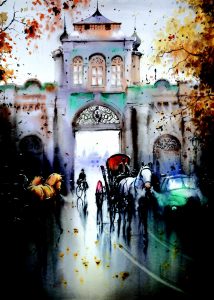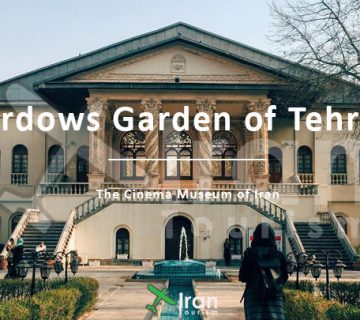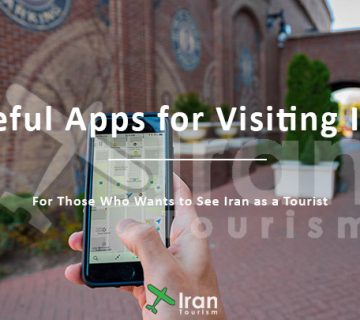National Garden (or in Persian Baq-e-Meli) is maybe the second most famous of Tehran Attractions. Before the construction of Azadi Tower, the National Garden was the landmark of Tehran City. Although it was a military base at the beginning, now it’s a cultural center that connects museums, libraries, and universities.
Follow this article from the Iran Travel Guide Center to learn more about the National Garden’s Background and history.
Overlook of National Garden, One of Tehran’s Attractions
Accessibility
To get to the National Garden, you can take either line 1 or line 2 of Tehran Metro and get off at Imam Khomeini station.
Or you can take the bus to the Imam Khomeini Terminal and get off at the last stop.
Open days and hours
National Garden is open from Saturdays to Thursdays, from 8a.m to 7 p.m.
Summary of Tehran National Garden
The National Garden, or “Baq-e-Meli” in Persian, is a historic and enchanting green space located in the heart of Tehran, Iran’s bustling capital city. This well-preserved garden is not only a testament to Iran’s rich horticultural heritage but also a site of great historical significance. It was originally established during the Qajar era, but its modern layout and design were influenced by Reza Shah Pahlavi, who sought to transform it into a showcase of Persian culture and modernization in the early 20th century.
Within the National Garden, visitors can explore a captivating blend of Persian architecture, tranquil greenery, and cultural institutions. The garden is home to several museums and galleries, including the Museum of Contemporary Art, where visitors can admire a diverse collection of Iranian and international artworks.
One of the most iconic features of the National Garden is the Abgineh Museum, which houses an impressive collection of glass and ceramic artifacts from various periods of Iran’s history. The architecture of this museum is itself a marvel, with its striking blend of traditional and modern elements.
As you stroll through the garden’s pathways, you’ll encounter lush trees, fountains, and beautifully landscaped areas that provide a peaceful retreat from the city’s hustle and bustle. It’s a favorite spot for locals and tourists alike to unwind, have picnics, or simply enjoy the serene atmosphere.
The National Garden’s historical significance is also noteworthy, as it has witnessed various key moments in Iran’s history, including political gatherings and celebrations. Its central location, adjacent to several important government buildings and embassies, adds to its prominence in the city.
The national garden was first established outside of the city as a military base during the Qjar dynasty around 200 years ago. but as the years passed and due to the expansion of the city, the base was disassembled and turned into what it is now.
Right now, the location of the national garden is at the heart of the Old Tehran District. This district boasts of cultural and historical Tehran attractions and places.

The Gate of Tehran Attraction: National Garden
The National Garden Gate was originally located on the eastern side of the military camp. But when the disassembling of the base took place, the old gate was destructed and the new one was constructed at the current location. It consists of 3 doors, 1 larger one for the vehicles and 2 smaller ones for the pedestrians.
The design is a fusion of Ero-Persian architecture. At the top of the gate, paintings and tiling can be seen which depict lions, machine guns, and some poems.
The paintings depict some historical moments that took place in Tehran, especially the military cue and the rise of the first Pahlavi king, Reza Shah.
The Garden of Baq-e-Meli
Although it is called the National Garden of Baq-e-Meli, not much of a Persian-style garden can be observed here. It is more like a passage that links some of the historical and cultural buildings of Tehran attractions together.
The reason for this name is that after the Military base was disassembled, the city officials decided to create Iran’s First Urban park at this location. Before that, nothing of such a definition existed in Iranian cities’ urban structure.
Now let’s check out what buildings are located in the National Garden (baq-e-meli):
The Museum of Communication and Post: it is the old Tehran post building which is located on the eastern side of the National Garden.
Malek Museum and Library: this building is located on the right side of the National Garden and it contains some of the most precious Persian handwritten books and manuscripts.
Ministry of Foreign Affairs buildings: these buildings are located northwest to northeast of the National Garden. Each of these buildings was constructed separately, during different eras. Hence, they are an Exhibition to show you the development and change in Iranian architecture and design during the past 100 years.
University of Art: the old building of Tehran University of Art is located in the far northern part of the National Garden. This building is not operational and has been under reconstruction for some time now.




No comment